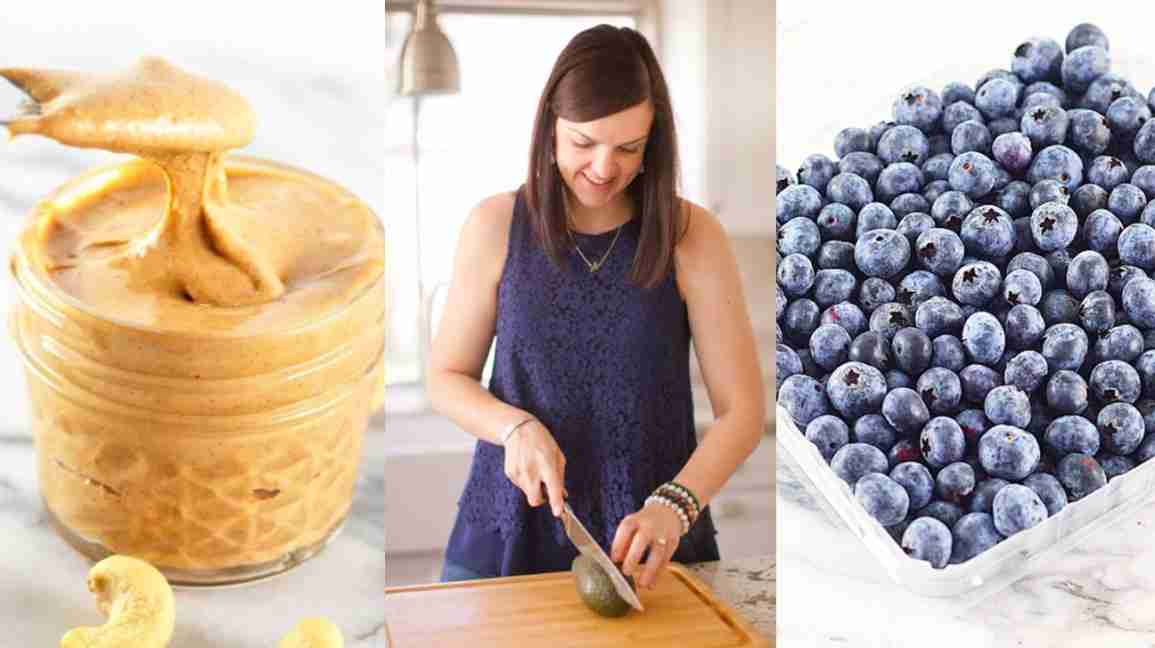Raise your hand if you like grocery shopping… anyone? I’m one of those rare people who loves roaming the aisles of the grocery store. This goes back to my childhood when I became very aware of food at an early age.
As a child with type 1 diabetes, I grew up trained by dietitians and educators, so I knew better than others the foods that helped stabilize my blood sugars. That knowledge carried me into adulthood and became my passion.
I entered graduate school to become a dietitian and could carb count blindfolded with my hands tied behind my back (okay, not really, but you get the idea).
But maybe you’re not like me. Maybe your diabetes diagnosis is new, or maybe food and/or the mere thought of the grocery store stresses you out. Don’t worry — if that’s you, you’re definitely not alone.
I hear this from friends and clients all the time. And it’s usually followed by some sort of request to have me grocery shop with them.
So, this is the next best thing! I’m sharing the nine foods I always have on my grocery list, and why they’re my go-tos.
1. Avocados. As a diabetic, I learned a long time ago that fat was my friend. Not only does it help stabilize blood sugars after meals, but it also adds flavor and great texture to dishes. Avocados are great sliced up on rice crackers or chopped in salads — or try this Avocado Cacao Mousse or these Avocado Banana Cookies for healthier versions of desserts.
2. Organic pasture-raised eggs. I try as best I can (and as our budget allows) to buy animal products that are organic. Organic eggs are at less risk for salmonella due to better living conditions, and one study found that eggs from pasture-raised hens were higher in vitamins A and E as well as omega-3 fatty acids! Try adding a fried egg to high-fiber toast in the morning. A classic “breakfast for dinner” with scrambled eggs is always a hit too.
3. Grass-fed ground beef. The United States Department of Agriculture (USDA) defines grass-fed animals as those that have been fed only “grass and forage, with the exception of milk consumed prior to weaning.” To be certified, the animals “cannot be fed grain or grain by-products and must have continuous access to pasture during the growing season.”
The diet that a cow eats has a direct impact on the nutrients and fat found in its meat. Grass-fed beef typically has less fat overall and a higher percentage of that fat is anti-inflammatory fat. It also has more antioxidants and greater amounts of conjugated linoleic acid (which may reduce your risk for heart disease and cancer). My absolute favorite way to use ground beef is this Cheesy Beef & Kale Pasta Bake!
4. Cucumbers. When you look at vitamin and mineral content, cucumbers don’t offer much. But they do have a decent amount of fiber and a lot of water, which make them a great way to stay full and satisfied as part of a larger meal. And if you remember your first-ever diabetes education appointment, they probably talked to you about “free foods” (foods that don’t require insulin and don’t contain any significant amount of carbohydrates). Well, cucumbers are pretty much the poster child for free foods. They’re great for adding crunch to a salad or sandwich and for dipping into hummus, which leads me to…
5. Hummus. I always tell my clients that to avoid a blood sugar spike or drop, there are three things you need your meal or snack should have: fiber, fat, and protein. And hummus has all three! I like to use it in place of dressing on a salad and as a spread on sandwiches, or just to eat on its own with a spoon for an afternoon energy boost.
6. Fresh or frozen berries. I love all berries, but raspberries and blueberries are my two favorites. In the late spring and summer, I buy them fresh every week, but as fall and winter roll along, I’m always so thankful that frozen berries are so easy to find (and affordable). Berries are a great way to add sweetness without using added sugar. They’re loaded with fiber and antioxidants too. Raspberries have one of the lowest percentage of sugar of any berry. And blueberries are an excellent source of vitamin K and manganese (which plays a role in bone development and helps our bodies use the nutrients in the foods we eat). Use berries to make your own no-added-sugar jam or homemade “frozen” yogurt.
7. Plain whole-milk yogurt. Both milk and yogurt contain a naturally occurring sugar called lactose. But most dairy products on the market also contain added sugar (and usually quite a lot). Most people are so surprised by just how delicious plain yogurt and fruit can be if paired correctly. As a type 1 diabetic, I am super in tune with how things raise my blood sugars. If I were to eat a container of fat-free yogurt, the carbohydrate (lactose) would get absorbed very quickly, potentially resulting in a blood sugar spike. But if I have whole-milk yogurt, the fat acts as a potential buffer to the blood sugar spike. It also delays the absorption of the carbohydrate, resulting in sustained energy. So, fat not only adds flavor but also keeps you fuller longer and gives you prolonged energy without blood sugar spikes. Try it on toast or in a yogurt bowl!
8. Whole-grain bread. Hopefully, by now, you’ve caught on that whole-grain bread is better than the refined white bread a lot of us grew up with. Whole-grain bread is made with just that — the whole grain. This means we get to reap the benefits of the antioxidants, fat, and fiber found in the outer layers of the grain that are discarded when making white bread. Whole grains also offer B vitamins, vitamin E, magnesium, iron, and fiber. Try loading up your whole-grain bread with all the goods, like this peaches 'n' cream toast.
9. Unsweetened all-natural nut butter. I have a serious obsession with all kinds of nut butter… and that seems to have been passed on to my kids as well. You’ll often find them taking any spoon they can find to the peanut butter jar, and I don’t have a problem with it at all. I always buy nut butters with no added sugar and no added oils, so I know they’re getting a quality source of plant-based protein and fat. And believe it or not, you don’t have to spend a fortune on fancy all-natural nut butter. You can make your own (like this homemade cashew butter) or buy some affordable store-bought brands. One of my favorite brands is Crazy Richard’s Peanut Butter (they also sell almond and cashew butter).
There are so many other foods I could list too, but these nine are an amazing way to revamp your grocery list. Focus on minimizing added sugars and on not being afraid to add some quality sources of fat to your diet!
Mary Ellen Phipps is the registered dietitian nutritionist behind Milk & Honey Nutrition. She’s also a wife, mom, type 1 diabetic, and recipe developer. Browse her website for yummy diabetes-friendly recipes and helpful nutrition tips. She strives to make healthy eating easy, realistic, and most importantly... fun! She has expertise in family meal planning, corporate wellness, adult weight management, adult diabetes management, and metabolic syndrome. Reach out to her onInstagram.


